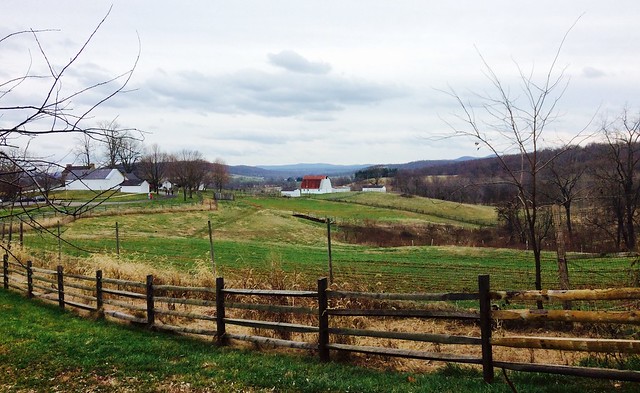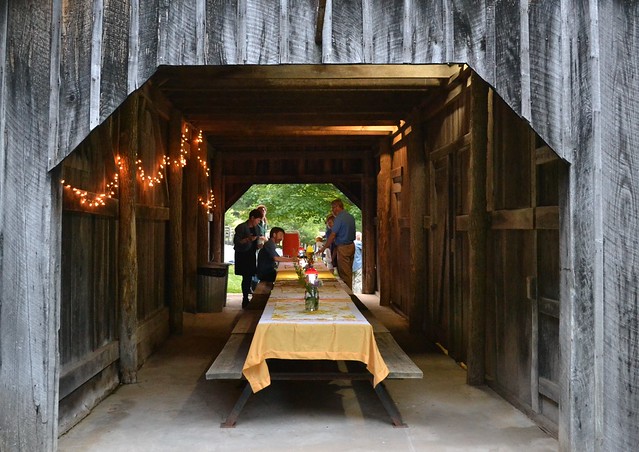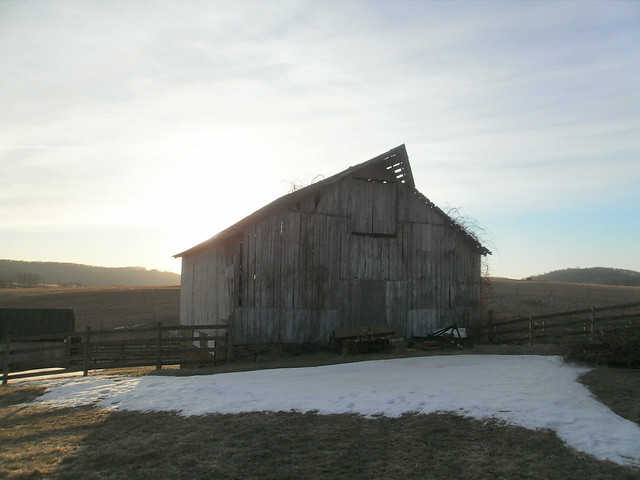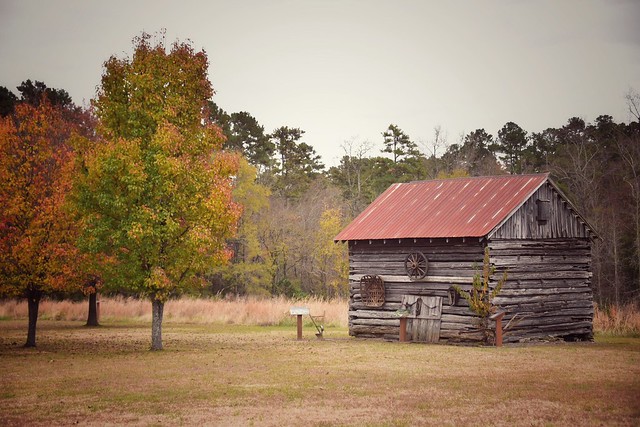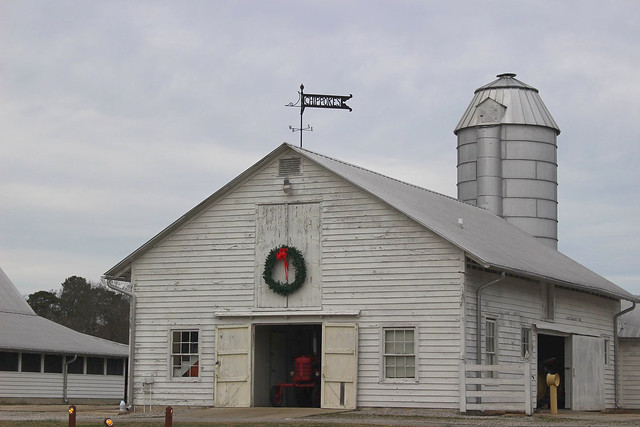Read Our Blogs
Barns of Virginia State Parks
As you travel across Virginia there is something you can't miss, the many barns dotted across the Virginia landscape, from farmland to the hidden hollows in the Blue Ridge Mountains. These barns were so well built, constructed using heavy timbers that have seemingly outlived and outlasted the occupants. From the early settlers in search of a place to farm and call home, to the current generations of farmers.
There is something inherently romantic about a barn, especially one that has weathered the storms of life and still stands strong to tell of it.
A red hay barn sits quietly in a field at Belle Isle State Park
For some who enjoy planning vacations around themes, I thought this would be a unique reason to visit various parks.
Encyclopaedia Britannica defines a barn: In agriculture, farm building for sheltering animals, their feed and other supplies, farm machinery, and farm products. Barns are named according to their purpose, as hog barns, dairy barns, tobacco barns, and tractor barns. The principal type in the United States is the general-purpose barn, used for housing horses and mules, cows, calves, and sheep and for storing hay and grain.
Wood is the traditional barn material, but sheet steel and aluminum have been increasingly used since World War II, particularly on large farms. Barns usually consist of two stories, the first to shelter animals or machines and the second to store hay or grain, though one-story barns were gaining in popularity in the late 20th century.
Some different styles of barns you may see in Virginia State Parks, as defined by Wikipedia.
DUTCH BARNS
Barns stand strong on the Virginia landscape
Barns are attractive romantic backdrops for photography sessions, Sky Meadows State Park
Image source: Meredith Sledge Photography
Dutch barn is the name given to markedly different types of barns in the United States and Canada, and in the United Kingdom. In the United States, Dutch barns represent the oldest and rarest types of barns. There are relatively few—probably fewer than 600—of these barns still intact. They have a curved roof which maximizes storage space.
CRIB BARNS
Cribs were used for celebrations, barn dances at Grayson Highlands State Park
It is the rustic appearance of crib barns that cause them to stand out. The most popular type of crib barn built in the Appalachian states was also the simplest to construct considering its size and stability. The "Double Crib" consisted of two cribs separated by a breezeway and covered by the same roof.
Crib barns were a popular type of barn found throughout the U.S. south and southeast regions. Crib barns were especially ubiquitous in the Appalachian and Ozark Mountain states of North Carolina, Virginia, Kentucky, Tennessee, Missouri, East Oklahoma and Arkansas.
BANK BARNS
Bank barn at Sky Meadows State Park
A bank barn or banked barn is a style of barn noted for its accessibility, at ground level, on two separate levels. Often built into the side of a hill, or bank, both the upper and the lower floors area could be accessed from ground level, one area at the top of the hill and the other at the bottom.
TOBACCO BARNS
Tobacco barn at Staunton River State Park
The tobacco barn, a type of functionally classified barn found in the USA, was once an essential ingredient in the process of air-curing tobacco. In the 21st century they are fast disappearing from the landscape in places where they were once ubiquitous.
Virginia Living Magazine wrote about Pittsylvania County tobacco barns: During the curing season, each barn was filled with the voices of men, women and children, owners and tenant farmers, white and black, tying leaves together and hanging them in the barns where they would cure for three to five days. Some 26 million pounds of tobacco was produced in the county in 1965 during its heyday.
Learn more here about preserving tobacco barns in Virginia.
TRADITIONAL BARNS
Traditional barns were multi-purpose (see tractor inside barn doors)
This traditional barn with silo on one of the oldest continually farmed plantations in the country. A working farm since 1619, Chippokes State Park.
BONUS
Lambs slumber safely in Martin's Station at Wilderness Road State Park
Block houses and forts in Virginia's far southwest corner were also more protected homes to farm animals and livestock. Hand hewn log structures used like barns and to house blacksmiths and farriers. Wilderness Road features the reconstructed Martin's Station, an outdoor living history museum depicting life on Virginia's 1775 frontier.
ROAD TRIP
While this isn't a complete list of all the barns of Virginia State Parks, we hope this piques your interest to see some of these unique structures.
Are you ready for a road trip? There are more than 300 cozy, climate-controlled cabins of various sizes throughout the state, campgrounds with full hookups, tent sites, camping cabins, and yurts. Call 800-933-7275 to learn more or to make a reservation.
If you have read the article and have a question, please email nancy.heltman@dcr.virginia.gov.
Search for blogs
By Park
Categories
Cabins
Camping
Fishing
History and Culture
Other
Programs and Events
Trails
Volunteers
Water Fun
Archive
2024
2023
2022
2021
2020
2019
2018
2017
2016
2015
2014
2012


